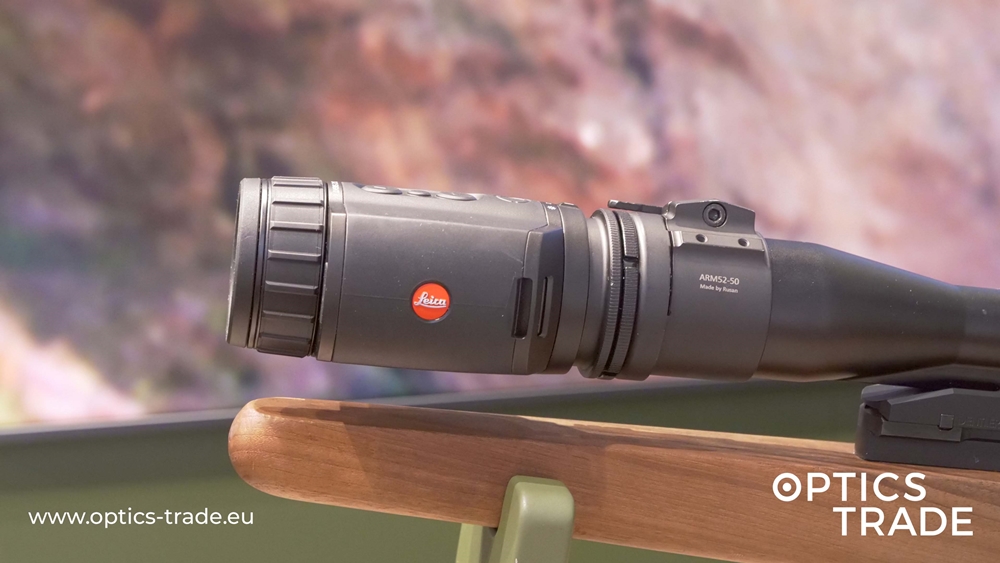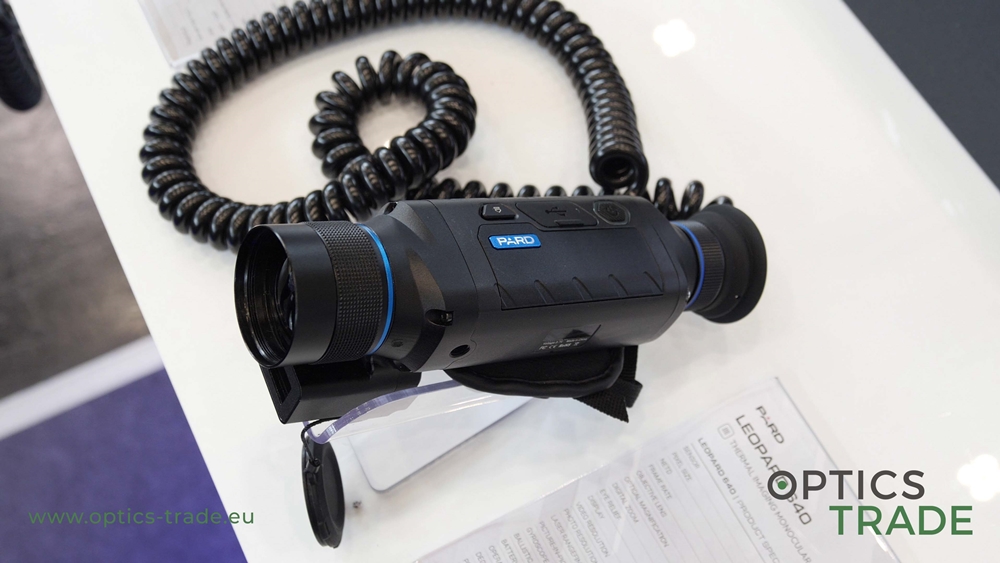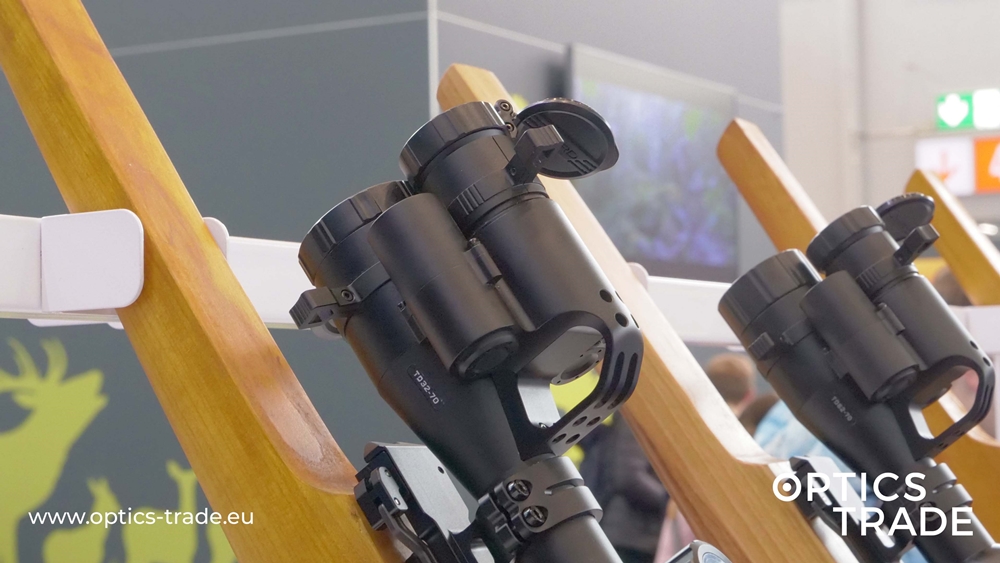Hello, and welcome to another Optics Trade Debates video.Today’s topic deals with thermal and analog night vision devices. We compiled the most frequent questions that our clients have sent us and we hope to illuminate some of the key differences between the thermal and analog night vision device options.
First of all, we receive a lot of questions about the similar pricing of these devices. Many wonder whether it’s better to buy a thermal device or a Generation 2+ night vision device. In the video, we show some Gen 1 night vision devices, which are a little bit less competitive compared to thermals. They are much cheaper and someone who is interested in purchasing an entry-level Gen 1 analog night vision scope for about 500 euros might not even consider a thermal option since they are much more expensive. However, if you look at the Gen 2+ devices, the prices are similar to thermal night vision devices.
For the practicality of visual comparison, we used a Pulsar Thermal Imaging Monocular Core FXQ35 clip-on and an analog Gen 2+ night vision clip-on model by Jahnke. Gen 2+ analog night vision devices are a little bit bigger and also heavier since their housing is made of metal. This easily separates them from thermal devices that are lighter but use less durable materials such as polymers and other plastic materials. Analog night vision devices require an infrared illuminator. Thermal options, on the other hand, do not emit any light towards the objects observed and with that, an additional illuminator is not required.
Let’s talk prices. The most affordable analog night vision devices belong to the Gen 1 and can be purchased at around 200 euros, with 800 being the upper limit. Of course, the type of technology is not the only criterion here because the prices can especially vary between different categories like monoculars, binoculars and rifle scopes. Note that there are no Gen 1 clip-ons. Gen 2 and Gen 2+ analog devices, in particular, can be purchased from 3000 euros on, 8000 being the approximated maximum cost. That makes them more expensive than the thermals.
Now regarding the thermal options, product pricing generally starts at 1000 euros. The numbers can rise all the way up to the 5000-6000 range and that estimation does not include the most professional thermal devices available on the market.
The biggest distinction between thermal and analog night vision devices is in the technology, in other words: how each category of night vision devices operates.
Turning to the optical characteristics, thermal night vision devices are digital. That means that there is a sensor in the front, behind the objective lens. All the electronics are placed within the body and the display is placed at the rear of the device. The user will always look at the display, no matter whether the device he’s using is a clip-on, binoculars or a scope.
The limiting factor of this set-up is the resolution of the sensor and the resolution of the display. This is where analog night vision devices, notably those belonging to the Gen 2+ or even 3, have an advantage over the thermal devices currently available to the civilian population. Their resolutions are much higher, showing the observed object in greater detail. Admittedly, this might change in the future as new thermal devices continue to be developed at a rapid pace.
The second optical characteristic that we must mention is the use of light. Thermal devices do not require a light source to operate and no infrared illuminator is needed. They are passive and perform the same during daylight and during the night.
Gen 2 devices of the analog type need an infrared illuminator to beam light towards the observed object. The reflected light then creates the image on the display for the user to see. This has an advantage but also a couple of disadvantages. Let’s say that you’re looking at red deer. All the details of the trophy will be shown really nicely on an analog display. With a thermal, you might have a problem looking at the trophy since its body parts won’t be warm enough at a distance. The animal will simply have to get closer for the user to be able to see the fine differences between the body temperatures.
But the higher resolution comes at a price. Analog devices are bigger and heavier than thermals. They also won’t operate as well under difficult weather conditions. Fog and rain will negatively affect the visibility of the observed object. This is because each tiny particle, like a rain droplet for example, will reflect light right back onto the display. What is more, physical obstacles too might get in the way of a light source and prevent it from powering the analog night vision device. Note that the animals can detect infrared light if it’s below 850 nanometres of wavelength. This is an avoidable issue with quality Gen 2+ devices, where the user isn’t detectable to the animal at 875 nanometres but can still easily see it in great detail.
Analog night vision devices of Gen 2+ usually operate at 850 nanometres. Gen 1 devices, on the other hand, operate at lower ranges and make the user visible to animals. With the first generation, an infrared illumination of around 800 nanometers of wavelength is necessary. Again, that will make the user detectable to the animal and especially if his illuminator is set to a high-intensity setting. Thermals clearly come out as a winner in this regard, with their passive capabilities shielding the user from the risk of being detected.
Another important difference between the thermals and analog night vision devices is that thermals need calibration. Calibration takes a couple of minutes, to put it more simply: the image on the display freezes and the user is unable to follow what is happening in real time, in that exact moment. That can be obviously incredibly frustrating when observing a moving target. In such instances. it is better to set the calibration setting to manual. It is true that quality thermals feature a shutterless calibration, meaning that the user can follow the action at all times, without the freezing effect. Again, the debate could return to discussing the differences in quality levels of products available on the market.
Consider the area of application before purchasing a night vision device. If you’re a hunter, thermal devices are definitely the way to go. Using a digital display, the individual will be able to identify the gender of the trophy faster and with a higher accuracy. The animal will be unable to detect the infrared light emissions at the ranges typical of thermals. What is more, thermal imaging devices will continue to perform under any weather conditions, and physical obstacles in the natural environment won’t be a problem either. The detection range of thermal night vision devices can surpass 2 kilometres or more, giving these type of devices a huge dominance over analog version, where a mere 500-metre detection range is something of a miracle. Of course, infrared illuminators can only do so much.
Let’s compare the clip-ons. With an analog clip-on, it’s hard to access what happens after the shot. The animal could either be killed or it could run away into the safety of bushes and the shooter will be unable to tell the outcome before the target disappears from the view. If the animal indeed flees, the analog night vision devices with their infrared illuminator will be blocked by the reflecting light of physical obstacles standing between the animal and the hunter.
With a thermal night vision clip-on, nothing could be simpler. Even if the animal flees, the trail will be easily visible on the display and the likely physical obstacles between the animal and the hunter will be no match for the thermal imaging technology. There is the disadvantage of the battery life, though. Thermal night vision devices cannot provide the durability of analog ones, where even small batteries like the AAs or CR123As will last for years. With a thermal, always pack a battery backup because you will burn through them much, much faster.
Analog night vision devices come with the con of photocathode inside the light-amplifying tube which has a limited lifespan. Its performance will shorten with each extended use. With analog Gen 2 and 2+ night vision devices in particular, sun exposure and exposure to other bright light sources will result in damage. StIll, even if the user follows the owner manual to perfection, the tube will have to be continuously replaced after 5 or 7 years of use.
We already established that thermal devices can be used during the day and the nighttime without as much of a hitch. Compare that to the analog night vision devices. With an extensive use of an analog night vision device under strong daylight, the user runs the risk of draining out the light-amplifying tube. This does not happen with thermals as they operate in the same manner 24/7, simply differentiating between warm and cold areas.
There is something more. Modern thermal night vision devices, like the Pulsar Helion Thermal Monoculars, are able to take photos and videos. Both analog and thermal night vision devices are able to handle recoil, though most users’ personal preference sides with thermals due to their smaller size and weight.
We would like to thank you for your time. In case we did not answer all the questions regarding this topic, please leave a comment down below or send us an email. If you found this video useful and would like to learn more, please subscribe to our Youtube channel. See you next time!




